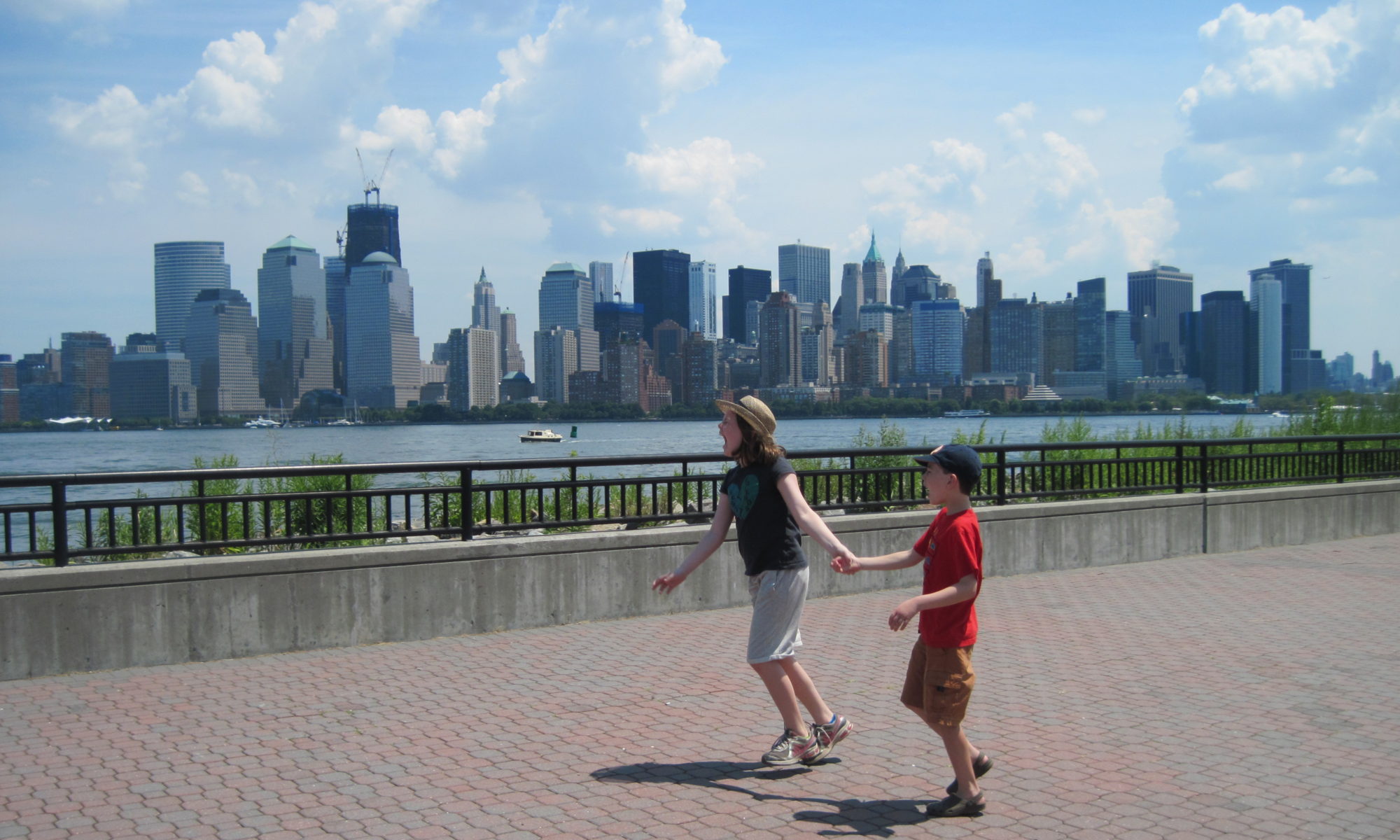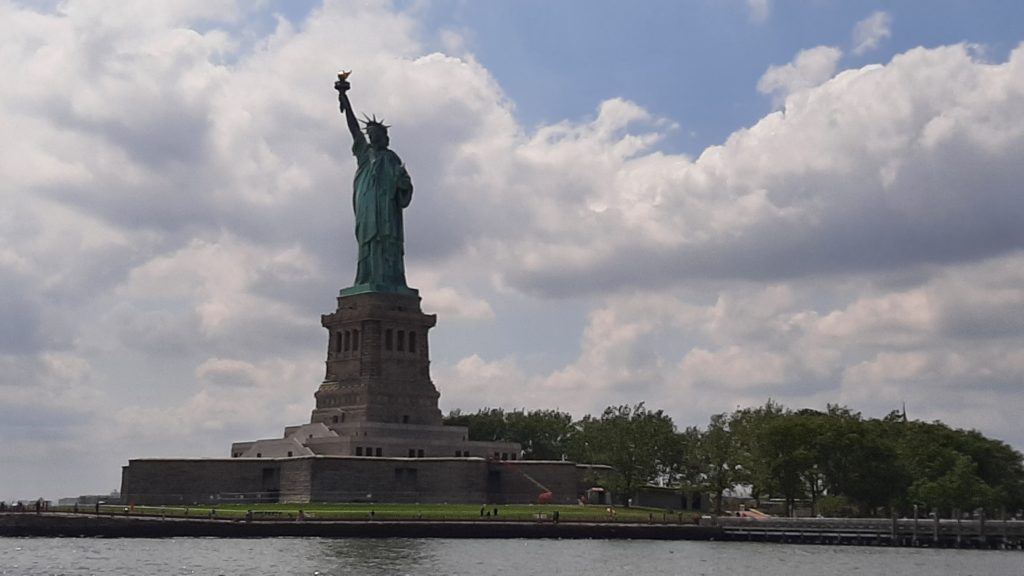
One might think nothing much changes at the Statue of Liberty. But one would be wrong. I didn’t do much research before booking our ferry tickets to visit the Statue of Liberty with kids during the pandemic, other than seeing the crown wasn’t open. Not a problem – there are a lot of stairs and some of my traveling companions were not eager to take them.
After getting off at the ferry stop, though, we learned that the audio tours were free, and then I saw a building that looked new and shiny. It WAS new and shiny. In fact it was opened in May 2019, and the current National Park Service handouts still don’t even list the museum on them, or on the map. Our trip around Liberty Island, which initially was going to be short, just got a lot longer. We made the Statue of Liberty Museum our first stop.

The beauty of the museum, in addition to it being a beautiful museum, is it’s included in the ferry ticket admission. No additional pedestal ticket needed, as that’s where the museum used to live. No crown museum ticket needed. You can still get up close to one of the (several versions) of the torches. And see how the statue was made. And see items inspired by the statue over the years. And there’s no additional screening required.

The Statue of Liberty with kids – the museum
Unfortunately I missed the 10 minute film about how the statue was constructed, and we decided not to go back for it. But I still learned some new things in the museum. Like the statue design was taken from a similar design for a statue that was designated for Egypt. And that at the base of Lady Liberty’s feet (hard to see from down below) are broken chains. The statue was conceived shortly after the Civil War, and while not overtly stated, there is a connection there. Initially Lady Liberty was going to hold broken chains signifying slavery’s end. Instead, the broken chains by her toes were to signify freedom from oppression.
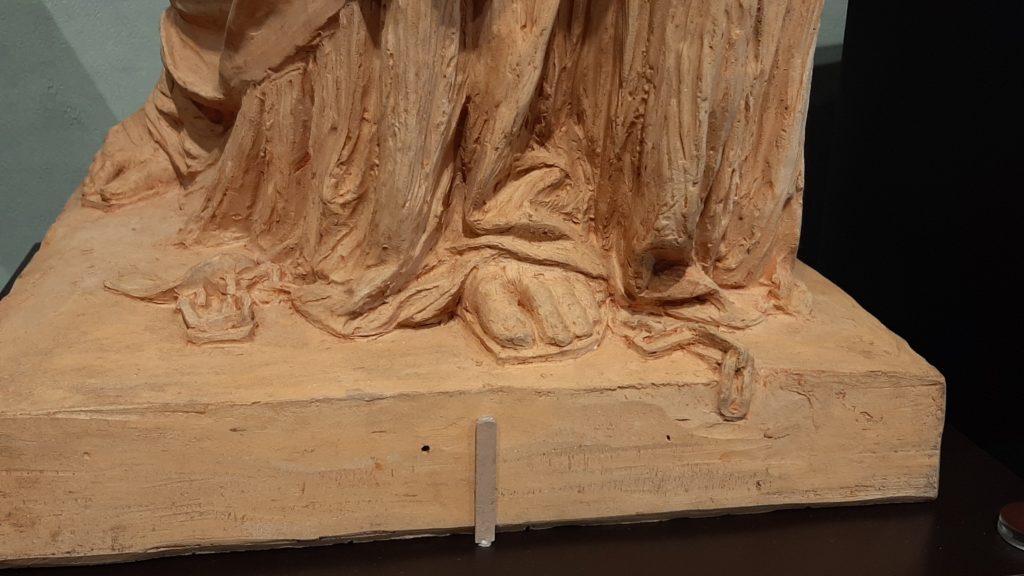
You’ll see an exhibit which takes you into a “workshop” that’s like the one where Frederic-Auguste Bartholdi’s workers created the statue in many individual pieces. It took 60 craftsman, starting in 1875, to create it using the repousse process to hammer thin copper sheets connected to interior framework. They have a replica of Lady liberty’s foot, and if you look closely, you can see how it’s nailed into the framework and polished to remove those rough edges.
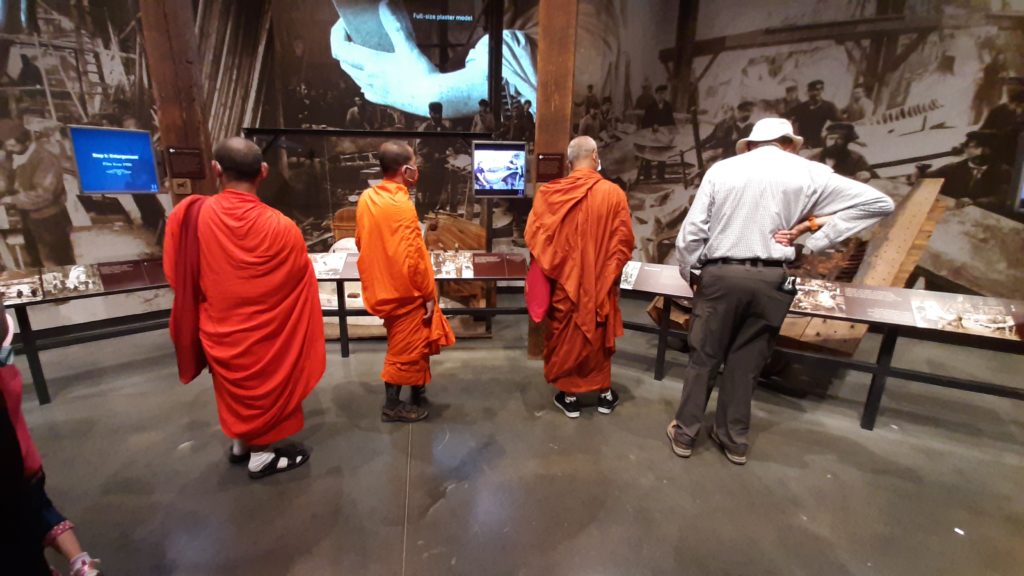
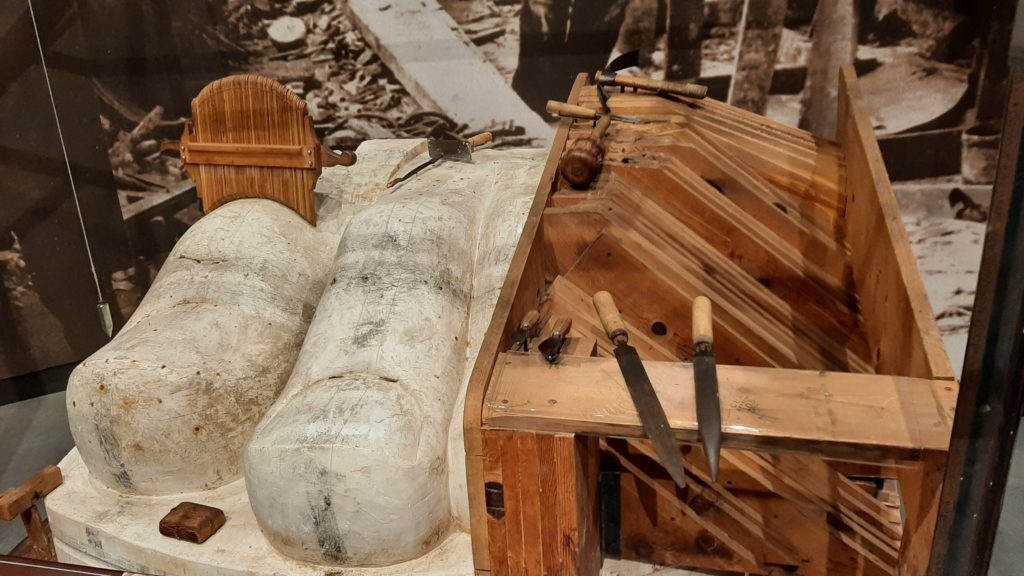
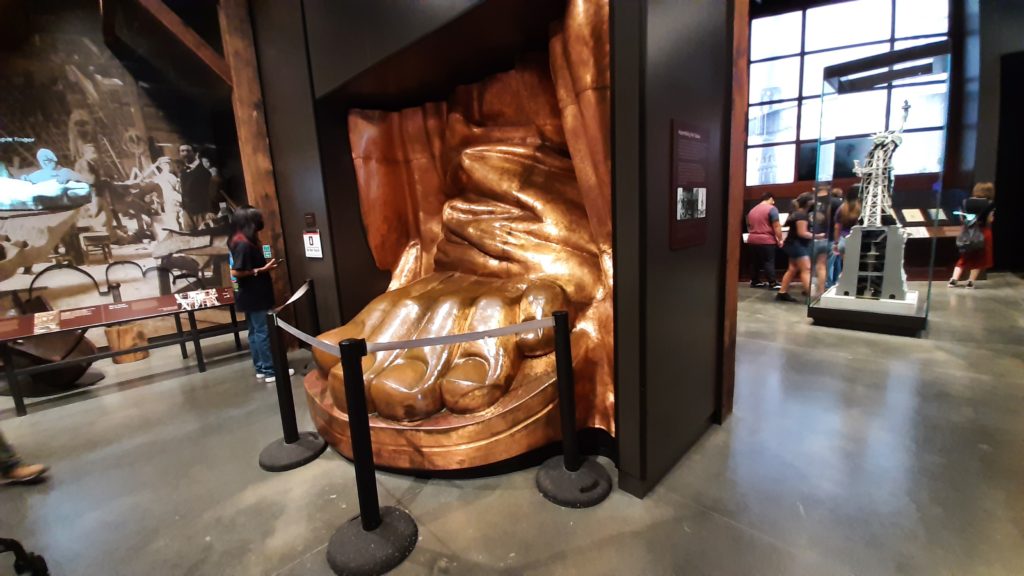
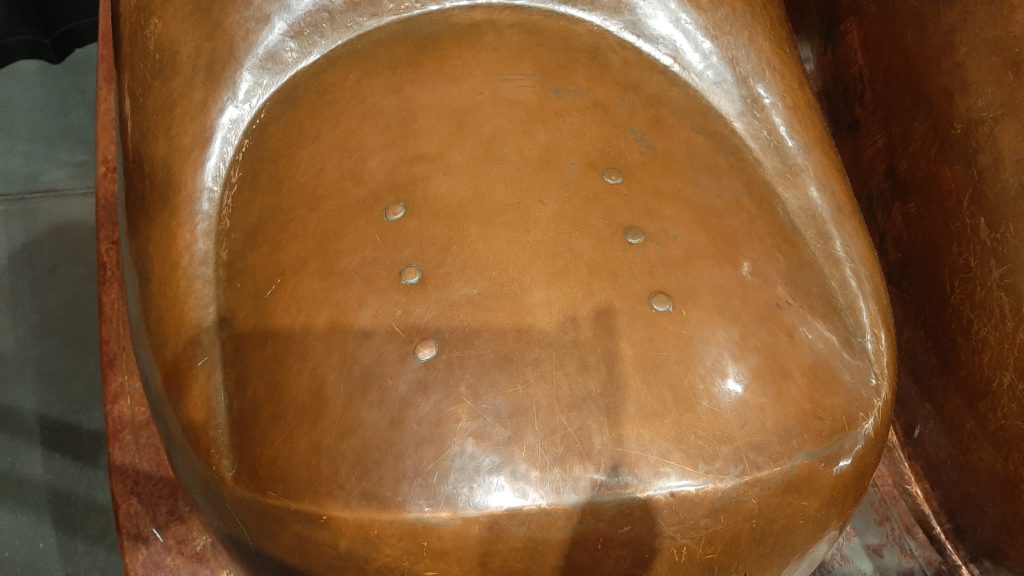
It was interesting to learn how the pedestal was constructed, with choices of several designs. The French raised money for the statue, and the Americans had to pay for the pedestal. Fundraising for the pedestal was slow, so Joseph Pulitzer, a Hungarian-American Jewish newspaper publisher, created a campaign. He offered to publish the names of all donors, no matter how small. His efforts enabled the funds for the pedestal.

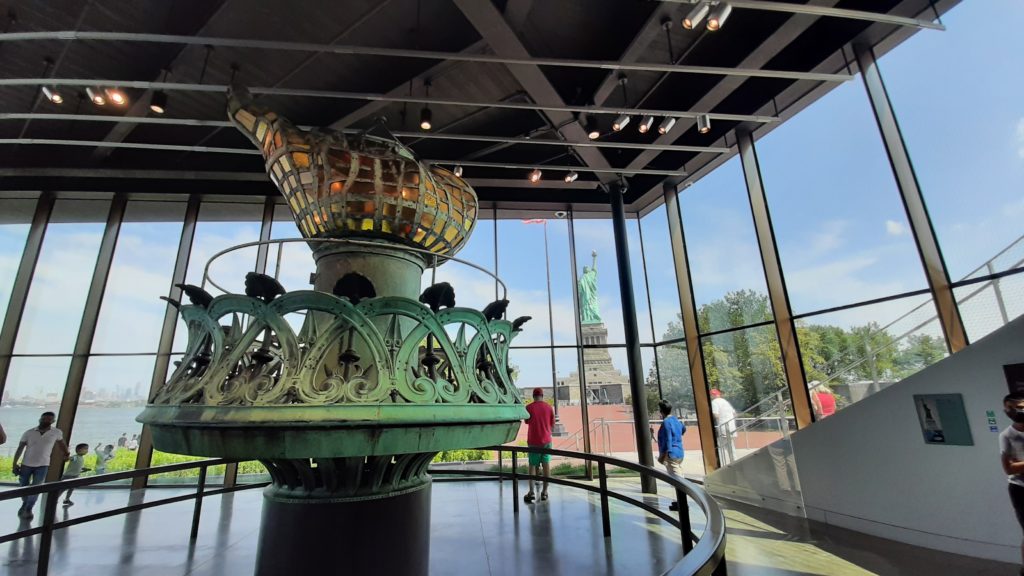
The torch, model of Lady Liberty’s copper face, and a model ear, originally in the pedestal museum, are now in the statue museum. You can see the torch and face being moved in this video.
This is an original torch for the statue, with a history laid out on nearby panels. The original design in 1876 was a closed copper shell, which was gilded to reflect light. By 1886, electric lamps were installed inside so the statue would double as a lighthouse. That didn’t work too well. They added more lights, a larger window and skylight in 1892. Bartholdi hated it and wanted it gilded. In 1916, they added 600 stained glass panels to replace the copper flame surface. Guzon Borgium, the creator of Mount Rushmore, redesigned the flame with amber stained glass panels and flickering lights inside. Instead, the torch let in the rain and debris. In 1986, the original design was restored, due to corrosion. They reproduced the copper shell based on Bartholdi’s original design, using the repousse technique and gilding it with gold leaf.
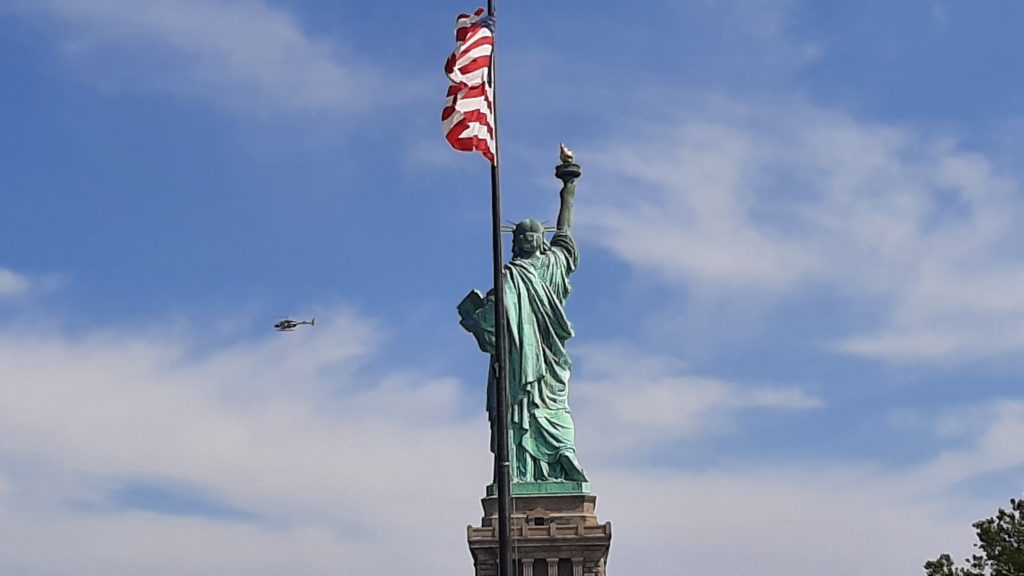
On your way out, Don’t miss the rooftop view. They have both stairs and an elevator, and it’s a lovely view from there – same view as below but a better vantage point. When visiting the Statue of Liberty with kids, they’ll like the view of her from the back too!
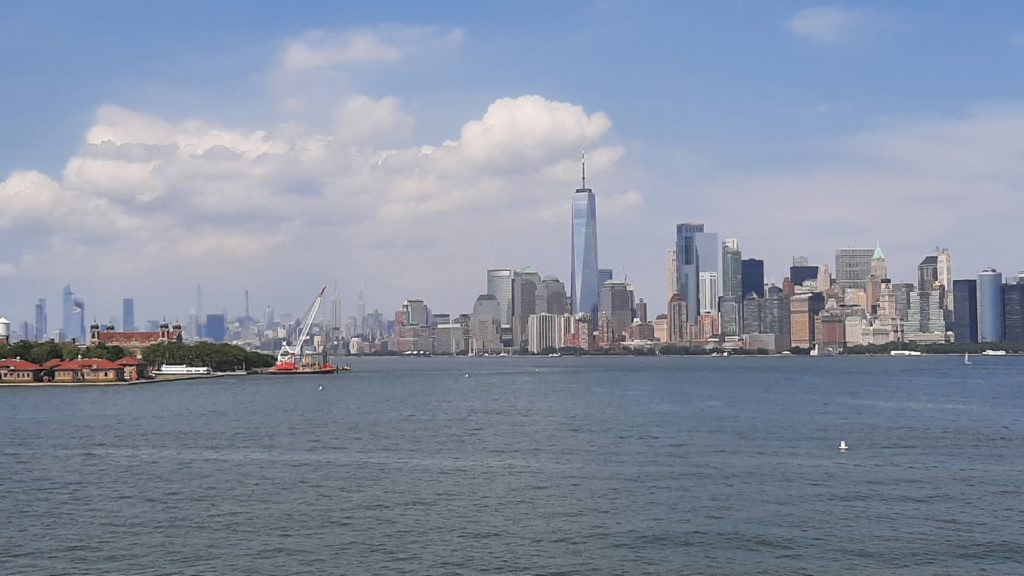
At this point, all that was left was to see the actual Statue of liberty from the front (since we couldn’t go onto the pedestal at that time).
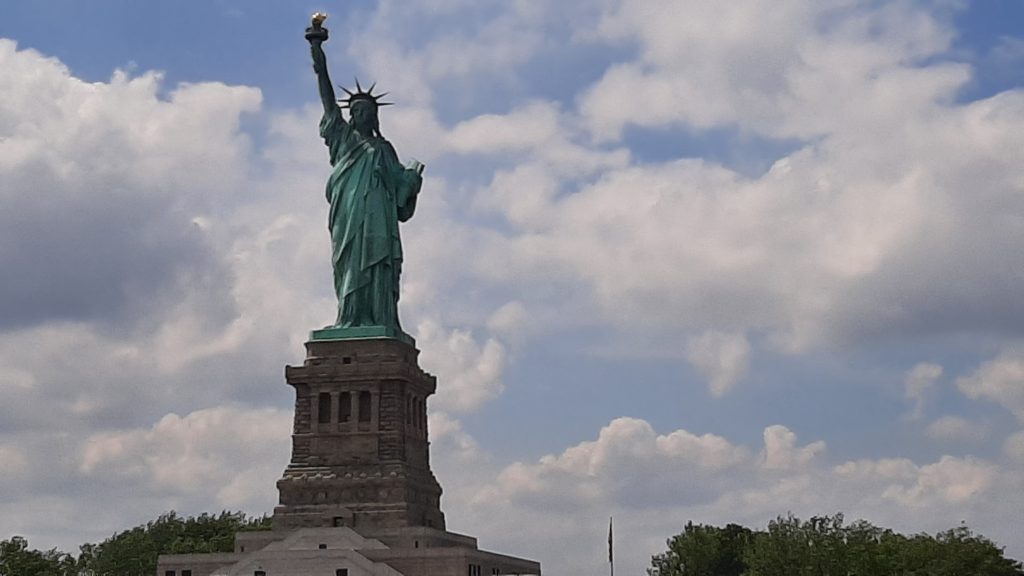
Fun fact about the Statue of Liberty:
What state is the Statue of Liberty in? According to the National Park Service, the Statue of Liberty, which lives on Liberty Island, is within New York’s territorial jurisdiction. However it is federal property administered by the National Park Service.

Visiting the Statue of Liberty with kids During the Pandemic
At this time (July 2021), there is no crown access. When there is access, make sure you follow the rules in terms of what you can bring, and know there will be additional security. Also access is via stairs only. Here is information about mobility issues going into the Statue of Liberty’s crown. According to the website, the pedestal is open to the public. When we were there in June 2021, we did not see anyone on the pedestal. Here is the National Park Service page on what is open during COVID-19 for the Statue of Liberty. As of July 2021, masks are required inside the Statue of Liberty Museum, but were not required on the ferry. The ferry currently has restricted capacity.
For information on the ferry routes and Ellis Island, read our review about visiting Ellis Island with kids after the pandemic.
Ellis Island and Statue of Liberty tickets: The official ferry vendor is Statue Cruises. You can get tickets online, at Castle Clinton in Battery Park NYC, at the ferry station in New Jersey’s Liberty Park, or by phone at 1-877-LADY-TIX (877-523-9849) or 201-604-2800. The ferry is free for kids under age 4. You can see a list of fees at the NPS Statue of Liberty site.
